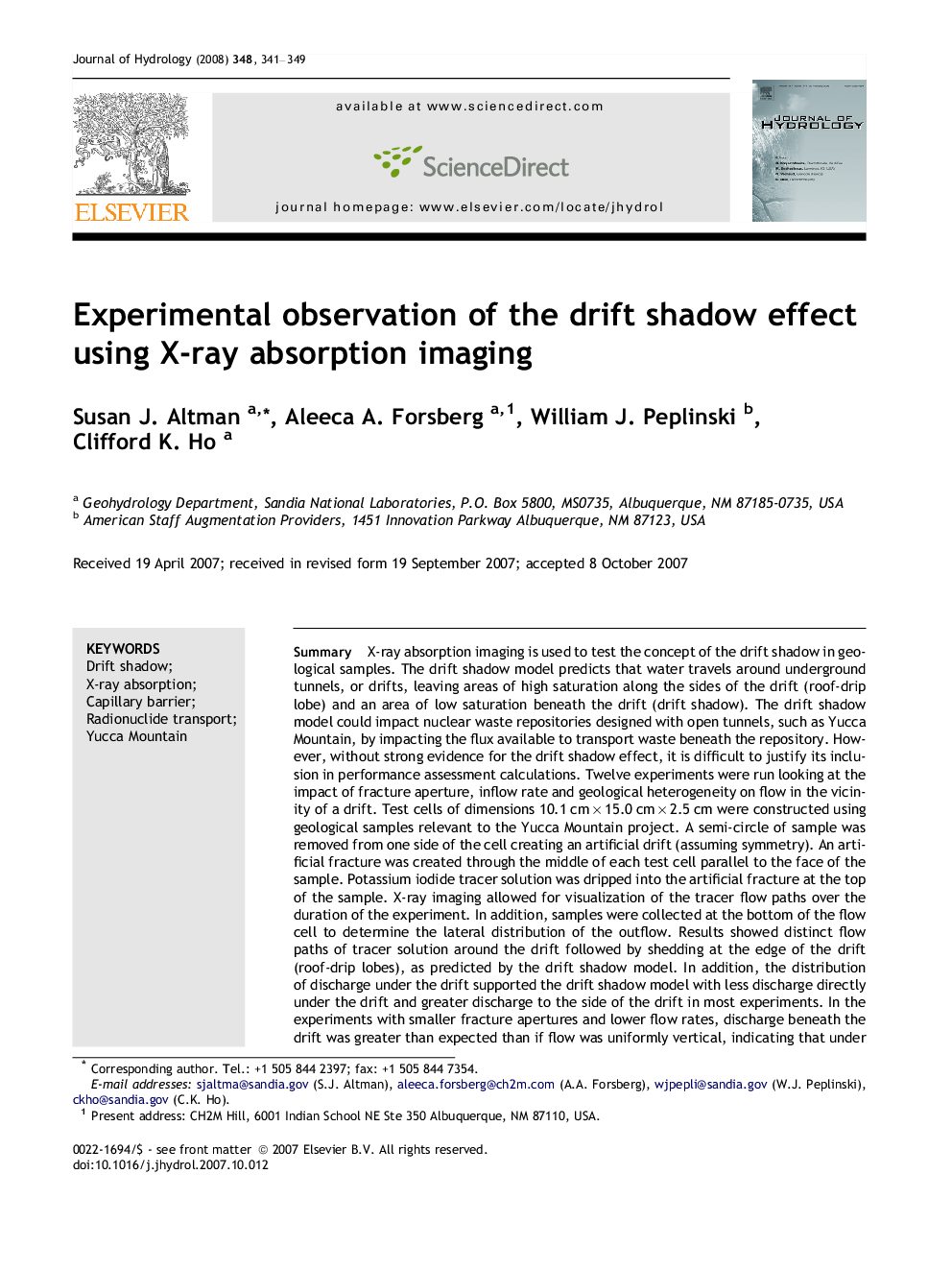| کد مقاله | کد نشریه | سال انتشار | مقاله انگلیسی | نسخه تمام متن |
|---|---|---|---|---|
| 4579703 | 1630119 | 2008 | 9 صفحه PDF | دانلود رایگان |

SummaryX-ray absorption imaging is used to test the concept of the drift shadow in geological samples. The drift shadow model predicts that water travels around underground tunnels, or drifts, leaving areas of high saturation along the sides of the drift (roof-drip lobe) and an area of low saturation beneath the drift (drift shadow). The drift shadow model could impact nuclear waste repositories designed with open tunnels, such as Yucca Mountain, by impacting the flux available to transport waste beneath the repository. However, without strong evidence for the drift shadow effect, it is difficult to justify its inclusion in performance assessment calculations. Twelve experiments were run looking at the impact of fracture aperture, inflow rate and geological heterogeneity on flow in the vicinity of a drift. Test cells of dimensions 10.1 cm × 15.0 cm × 2.5 cm were constructed using geological samples relevant to the Yucca Mountain project. A semi-circle of sample was removed from one side of the cell creating an artificial drift (assuming symmetry). An artificial fracture was created through the middle of each test cell parallel to the face of the sample. Potassium iodide tracer solution was dripped into the artificial fracture at the top of the sample. X-ray imaging allowed for visualization of the tracer flow paths over the duration of the experiment. In addition, samples were collected at the bottom of the flow cell to determine the lateral distribution of the outflow. Results showed distinct flow paths of tracer solution around the drift followed by shedding at the edge of the drift (roof-drip lobes), as predicted by the drift shadow model. In addition, the distribution of discharge under the drift supported the drift shadow model with less discharge directly under the drift and greater discharge to the side of the drift in most experiments. In the experiments with smaller fracture apertures and lower flow rates, discharge beneath the drift was greater than expected than if flow was uniformly vertical, indicating that under certain conditions some water could be carried back under the drift due to capillary action. Very low mass discharge into the drift (generally less than 1% of the inflow mass) along with the X-ray images of the tracer flow paths provide evidence that the drift is acting as a capillary barrier. X-ray imaging also showed that heterogeneities have some control on the flow paths. Experimental results such as these coupled with numerical modeling that better quantifies the effects of heterogeneities and uncertainties in input parameters may allow performance assessment calculations to include the impact of the drift shadow on radionuclide transport. If implemented, such studies could lead to improved natural barrier performance in future calculations.
Journal: Journal of Hydrology - Volume 348, Issues 3–4, 15 January 2008, Pages 341–349